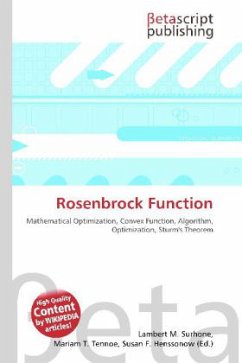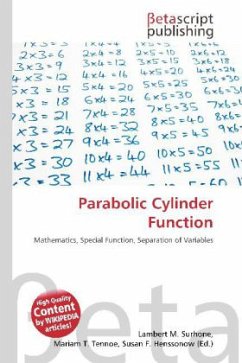
Rosenbrock Function
Versandkostenfrei!
Versandfertig in 6-10 Tagen
23,99 €
inkl. MwSt.

PAYBACK Punkte
12 °P sammeln!
Please note that the content of this book primarily consists of articles available from Wikipedia or other free sources online. In mathematical optimization, the Rosenbrock function is a non-convex function used as a performance test problem for optimization algorithms. It is also known as Rosenbrock''s valley or Rosenbrock''s banana function. The global minimum is inside a long, narrow, parabolic shaped flat valley. To find the valley is trivial. To converge to the global minimum, however, is difficult. It is defined by f(x, y) = (1-x)^2 + 100(y-x^2)^2 .quad. It has a global minimum at (x,y) ...
Please note that the content of this book primarily consists of articles available from Wikipedia or other free sources online. In mathematical optimization, the Rosenbrock function is a non-convex function used as a performance test problem for optimization algorithms. It is also known as Rosenbrock''s valley or Rosenbrock''s banana function. The global minimum is inside a long, narrow, parabolic shaped flat valley. To find the valley is trivial. To converge to the global minimum, however, is difficult. It is defined by f(x, y) = (1-x)^2 + 100(y-x^2)^2 .quad. It has a global minimum at (x,y) = (1,1) where f(x,y) = 0. A different coefficient of the second term is sometimes given, but this does not affect the position of the global minimum. Two variants are commonly encountered. One is the sum of N / 2 uncoupled 2D Rosenbrock problems, f(x_1, x_2, dots, x_N) = sum_{i=1}^{N/2} left[100(x_{2i-1}^2 - x_{2i})^2 + (x_{2i-1} - 1)^2 right]. This variant is only defined for even N and haspredictably simple solutions. A more involved variant is f(x) = sum_{i=1}^{N-1} left[ (1-x_i)^2+ 100 (x_{i+1} - x_i^2 )^2 right] quad forall xinmathbb{R}^N.












